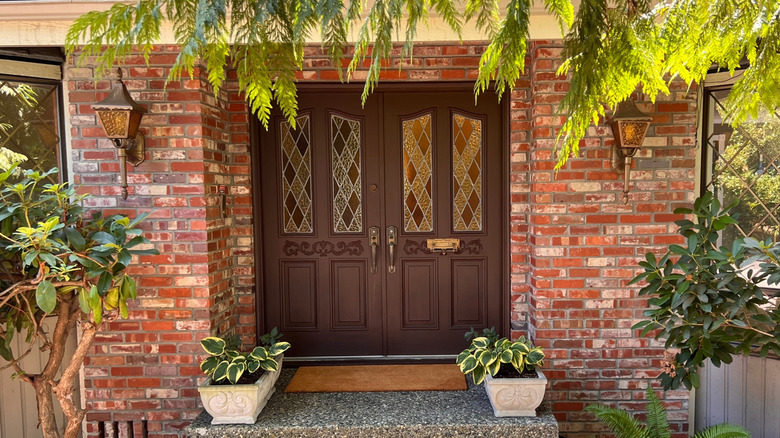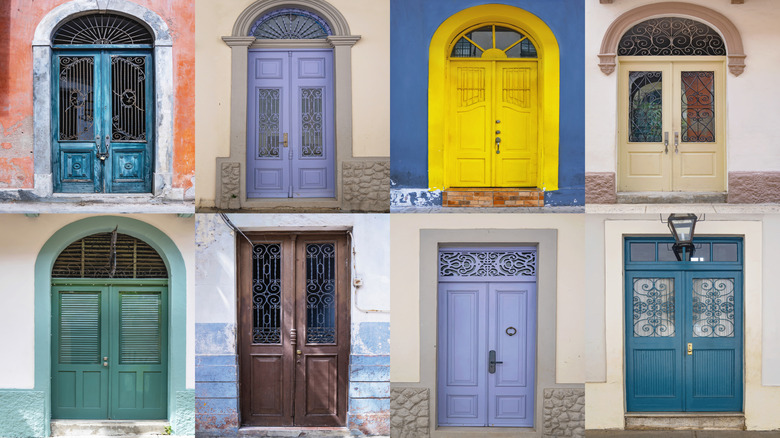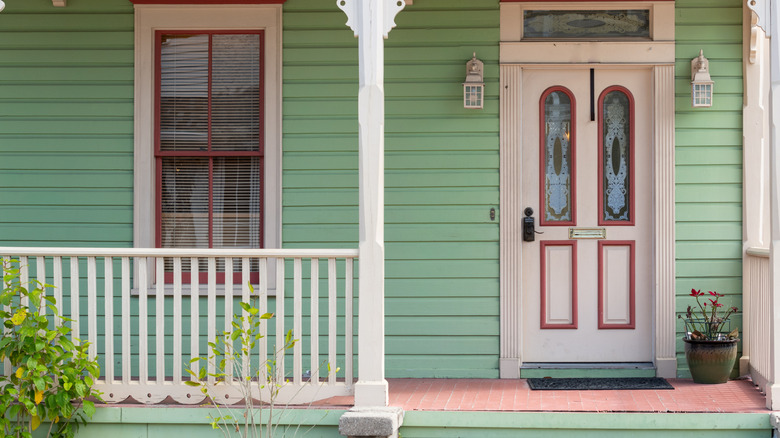Why You Should Always Try To Thrift Doors For Your Home
The thrift store is an amazing place where you can find all manner of one-of-a-kind items, including things that can elevate your home's design. However, most people's instincts when scouring the thrift store for interior decor are to look for interesting furniture or antique art, not structural elements. While it may not be the first thing that comes to mind when thrifting for the home, a secondhand door can add a ton of character to your space and really make a statement.
Not only are vintage doors typically made with more quality, sturdy wood, but they are usually made with a bit more design finesse than the average door you see today. The carvings and inlays that can adorn thrifted doors make the pieces must-haves for any eclectically styled room or anywhere going for a lived-in, opulent aesthetic. There are plenty of valuable items to seek out at a thrift store, but doors are probably one of the most underappreciated.
But thrifting doors isn't just about looks — it's also a smart way to save money, especially if you're only replacing one or two doors. It's far cheaper than buying new and lets you skip the markup that comes with custom design or solid wood construction. It's also a more sustainable option, keeping still-usable materials out of landfills and cutting down on demand for new resources. Many secondhand building supply stores are also run by nonprofits, so you'll likely be supporting a good cause in the process.
How to thrift for doors
When you're ready to look for a secondhand door, start by checking local salvage yards, architectural reuse stores, or nonprofit shops like Habitat for Humanity ReStore. Some independent thrift stores with a home focus may carry doors too, though availability varies. With a bit of patience and a sharp eye, you can find everything from heavy carved wood pieces to super cheap hollow-core doors.
Before you go thrifting, first take measurements of your existing doorway so you don't end up with something that's too big or small. For the doors themselves, keep an eye out for visible damage like rot, warping, or cracks. If you're looking to replace an exterior door, security matters, so skip anything that feels flimsy or that you have any doubts about.
Also, don't discount newer doors when on the hunt. While antique doors are great for adding detail and personality, newer secondhand doors can still be an affordable way to add some unique style and are a safe choice if you want to paint or refinish your finds. No matter what type of door you thrift, be sure to clean it first to bring back some of its original luster. As you clean, if it's an older door, be mindful of maintaining the patina so you don't damage your antique.
How to utilize a thrifted door
The process of replacing a door with a new one (or in this case, an old one) is relatively straightforward, but if you're not comfortable with carpentry you may want to call in a professional. Installing a vintage door will likely involve removing the entire frame of the other door, but that shouldn't be a concern as long as you don't commit any of the common mistakes that occur when installing a door.
Even if you don't necessarily want to swap out all your current doors for thrifted ones, it still pays to keep an eye out for them when you're shopping. They can be salvaged for vintage door handles, hinges, or even panes of stained glass. Or, you could find a way to completely transform a thrifted door, like by turning it into a coffee table or bar top.
Older doors do have a few drawbacks. They might not perfectly fit your door frame, so be prepared to do some sanding. You'll also need to check for lead paint or other potentially hazardous materials, particularly on doors made before the 1980s. But if you can find a well-made, one-of-a-kind door that fits your home, the extra effort will be worth it.


